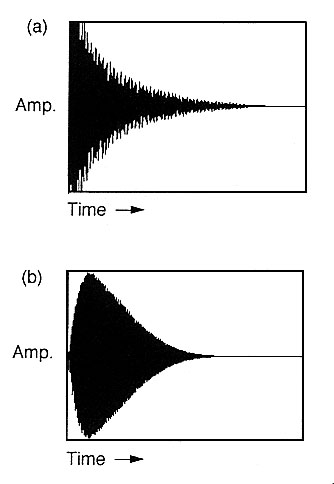

Nevertheless, EQ ripping is certainly educational, especially since it can also be used to 'learn' the response curves of other hardware/software EQs, or indeed the frequency-response foibles of other hardware such as microphones, tube amps or tape machines. For instance, you don't want every response ripple of the target track to be faithfully re-created in your destination track, particularly if the songs are in different keys, since peaks belonging to specific notes in one track will never correspond to those in the other one. This technique can undoubtedly benefit some songs with similar arrangements and instrumentation, but it's not the panacea that some musicians think. With up to 4096 bands of EQ, you can apply complex response curves (as shown above with Voxengo's Curve EQ) to simulate the foibles of hardware devices, learn the response of one file and apply it to another, or draw in your own exotic responses for special effect purposes (as demonstrated by Delaydots' Spectral Shaper).Ī very popular pastime is so-called EQ ripping, where you modify the frequency response of one of your own tracks to match that of a well-polished commercial offering. This opens up a lot of possibilities, including surgically removing small details related to specific frequencies in an audio file, such as hums and buzzes that may each involve several harmonic components, but for most people it's the ability to 'learn' the frequency response of an incoming sound and subsequently apply this to another audio file that's most intriguing.

Once you have sufficient bands in an EQ, you can move beyond the peak and shelf responses of more traditional designs to generate any frequency-response curve you can imagine. Audio quality can also vary considerably, but there's plenty of choice, varying from freeware effects to complex commercial products let's have a look at what's on offer.


Once in the frequency domain, you can also mathematically manipulate each band, at which point the results start to get really intriguing.The sonic ground covered by multi-band spectral plug-ins is quite considerable, ranging from delicate transformations and subtle effects all the way through to sonic mangling of the most extreme and unexpected kind. If a second audio file can be loaded into your plug-in, for even more advanced effects you could statically compare the EQ of your audio signal with it and attempt to match the two (aka 'EQ ripping'), or do this dynamically for vocoding or morphing effects that contain characteristics of both signals, such as 'talking' pianos or 'singing' drums. These can provide far more radical results than the more typical multi-band dynamics plug-in or, alternatively, more refined ones, depending on personal taste! At the simplest level, you could alter the static output level of each band, giving you an extremely flexible EQ, or alter these levels dynamically to create gating, compression or expansion effects in the spectral domain. Today's computers give us the power to split audio into hundreds or even thousands of bands and give each one a different effect treatment. Are you brave enough to enter the frequency zone? There are now quite a few plug-ins on the market that have the ability to split audio into hundreds or thousands of bands and treat them separately, paving the way for a variety of weird and wonderful effects.


 0 kommentar(er)
0 kommentar(er)
